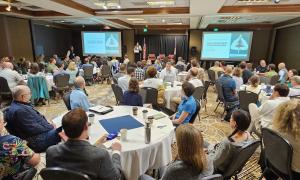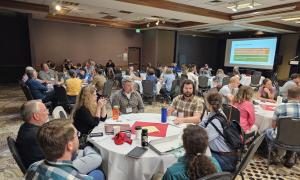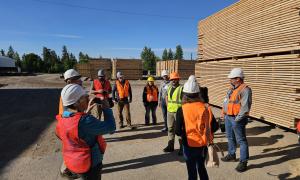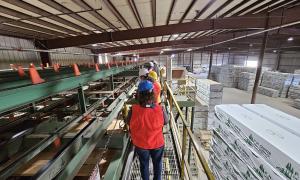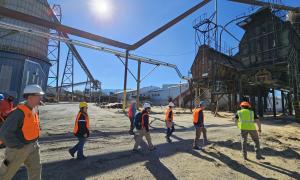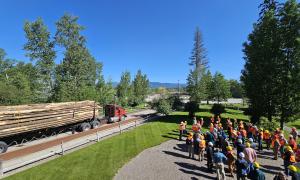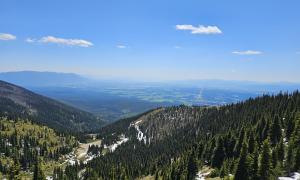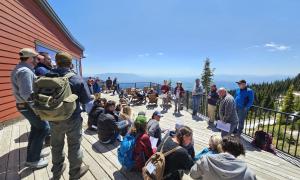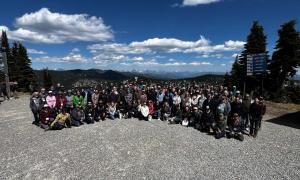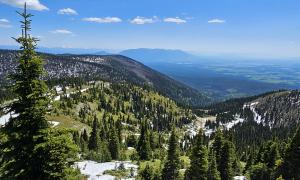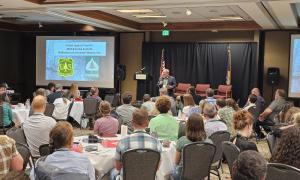2024 Forest Legacy Program Summit
Nearly 120 attendees gathered in Kalispell, MT, June 11-13, for the 2024 Forest Legacy Program (FLP) Summit. The 2024 FLP Summit was hosted by the Montana Department of Fish, Wildlife and Parks (MT FWP) and the Western Forestry Leadership Coalition (WFLC), with invaluable support from a planning team composed of representatives from state and federal agencies.
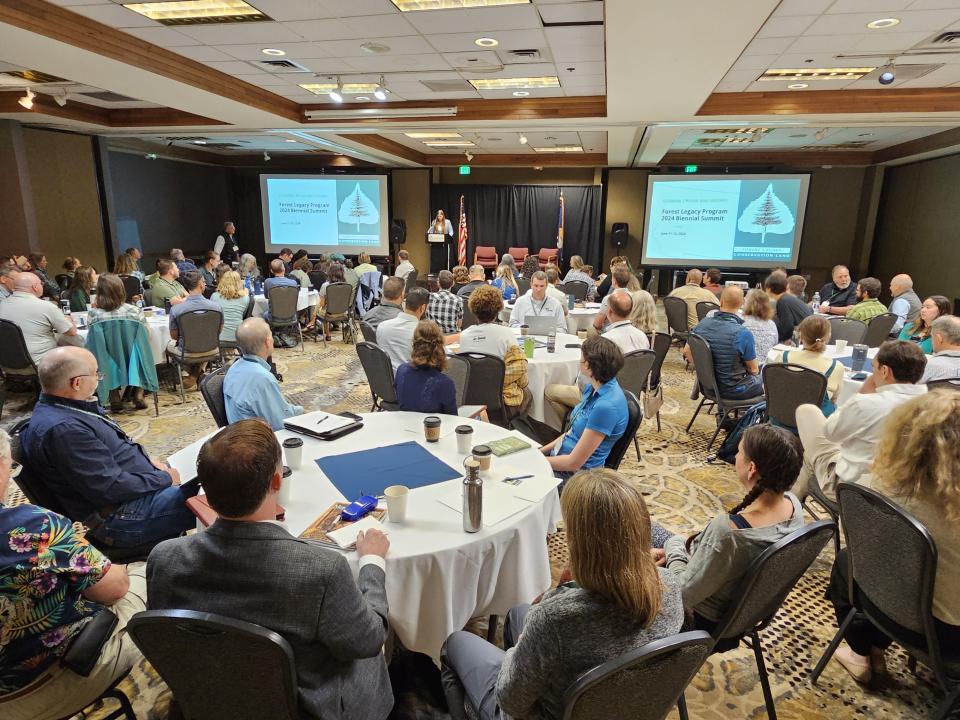
Given the western locale, WFLC played a role in logistical support, contributed to the local welcome, and helped to amplify outcomes across WFLC’s communication channels.
Representatives from 46 states, three territories, and several partner organizations attended the 2024 FLP Summit. This meeting marks the first occasion since 2018 that the group has gathered in person, and it provided the opportunity for several dozen new FLP coordinators to meet their peers from across the nation.
The in-person gathering allowed attendees to share challenges, opportunities, and innovations at the state, regional, and national levels. Above all, it provided a forum to celebrate the achievement of three million acres conserved by the FLP.
The Summit kicked off with a welcome from Shawn Thomas (Montana DNRC), Danielle Okst (WFLC), Rick Northrup (MT FWP), Danny McBride (Forest Service Northern and Intermountain Region), and Ben South (Forest Service Northern Region).
Collectively, these leaders emphasized the significance of the Forest Legacy program and its impact on both present and future generations.
“It's all about the next generation and opportunities we are giving them to be part of,” said Danny McBride. “Land that can be conserved forever; that’s what it is all about.”
Following the welcome, attendees spent some time getting to know one another and participated in an interactive trivia game designed to test their knowledge of the Forest Legacy program.
Attendees then listened in on a series of panel presentations discussing the challenges and successes encountered in project development and public engagement related to FLP projects in Musket Mountain (OK), Pelican River (WI), Wasatch Back (UT), Stimson Timberlands Legacy Project (multi-state), Michigamme Highlands (MI), Georgia Project Pipeline (GA), East Honolulu Project (HI), and assessing the feasibility of easements in Oregon.
In the afternoon, Amy Singh and Rob Schott with the Forest Service, led a presentation on due diligence through the lenses of project readiness, appraisal pre-work, and project durability.
Alice Ewen kicked off a conversation about the Justice40 Initiative and applauded the FLP community for finding great ways to deliver on Justice40 and the President's intent on equity. This was expanded upon in small group conversations led by Forest Service employees Jackson Moller, Claire Harper, Hannah Bergemann, Andi Giardina, and Neal Bungard.
To close out the day, Kris Tempel (Forest Service Northern and Intermountain Region), Leah Breidinger (MT FWP), and Rick Northrup (MT FWP) briefed attendees on the field trip.
Day two featured an insightful field tour with visits to F.H. Stoltze Land and Lumber Company and Whitefish Mountain Resort.
At F.H. Stoltze Land and Lumber Company, attendees had the opportunity to tour the mill, which has been operating since 1923. Over 10,000 acres of Stoltze’s land is managed under FLP conservation easements, including the Haskill Basin and the Trumbull Creek projects.
A breathtaking chairlift ride, courtesy of Trust for Public Land, brought attendees to the Summit House where they heard presentations on wildlife habitat connectivity (Jim Williams, Heart of the Rockies), an overview of FLP conservation accomplishments in NW Montana (Kris Tempel), benefits of the Haskill Basin and Trumbull Creek projects to the City of Whitefish's water supply and recreation economy (Mayor John Muhlfeld), and the Whitefish Lake Watershed Project and its benefits for School Trust Land forestry operations (Dave Ring, MT DNRC).
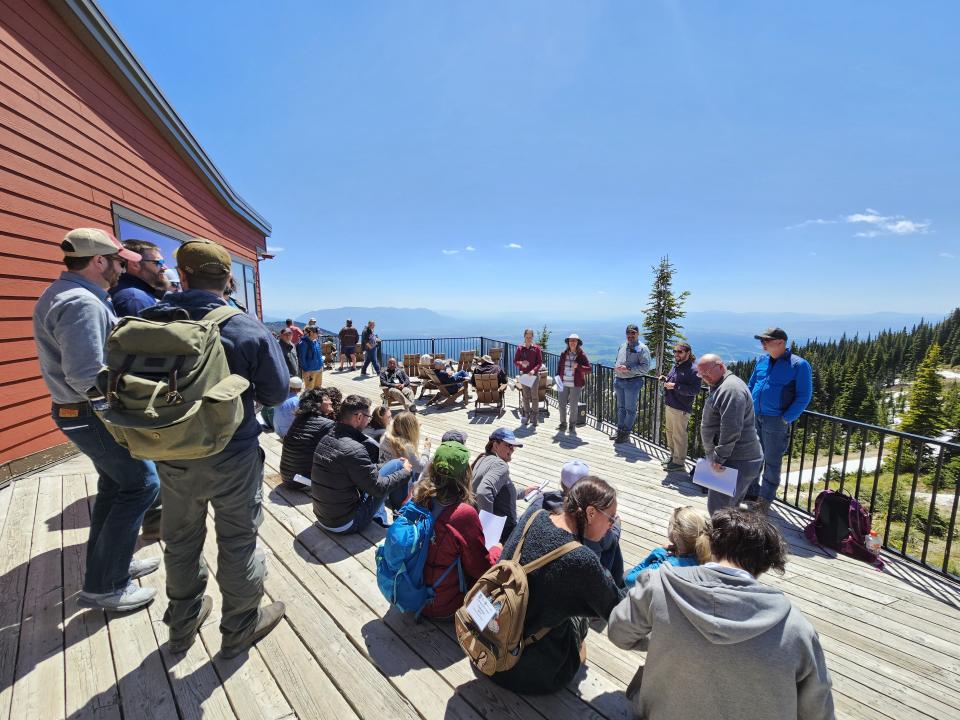
At the summit of the mountain, attendees overlooked several FLP projects, including Haskill Basin, Trumbull Creek, the Whitefish Lake Watershed, and Badrock Canyon. In total, the FLP has protected 291,423 acres in Montana.
Day two wrapped up with a lakeside banquet at Whitefish Lake Lodge, featuring forestry history by Scott Kuehn and a presentation of the Conservation Excellence Award to Kate Sudhoff from the Vermont Agency of Natural Resources.
After a fulfilling day outdoors, attendees reconvened inside for day three and kicked off by sharing highlights and takeaways from the field tour.
“The viewshed from the summit would have been very different without Montana’s longstanding dedication and success protecting large tracts of working timberland through the Forest Legacy program. The view we enjoyed from the mountain was prominently conserved Forest Legacy lands,” said Claire Harper. “This community would be very different, and the experience for visitors and community members would be very different without these conservation partnerships with private landowners.”
Attendees received insights from Claire Harper (Forest Service), Scott Stewart (Forest Service), Lesley Kane Szynal (LWCF Coalition), and William Kelleher (The Conservation Fund) to gain a deeper understanding of the federal policy landscape and developments in Washington, D.C.
Highlights included the celebration of 3,073,622 acres conserved and 471 projects completed. Of those projects, 80% were conservation easements and 20% were fee simple purchases, totaling $2.17 billion in investments.
As the day continued, Claire Harper (Forest Service) and Lindsay Nystrom (Massachusetts Department of Conservation & Recreation) provided an overview of State Forest Action Plans and State Forest Coordinating Committees. Attendees also learned about carbon credits and their interaction with old and new FLP easements.
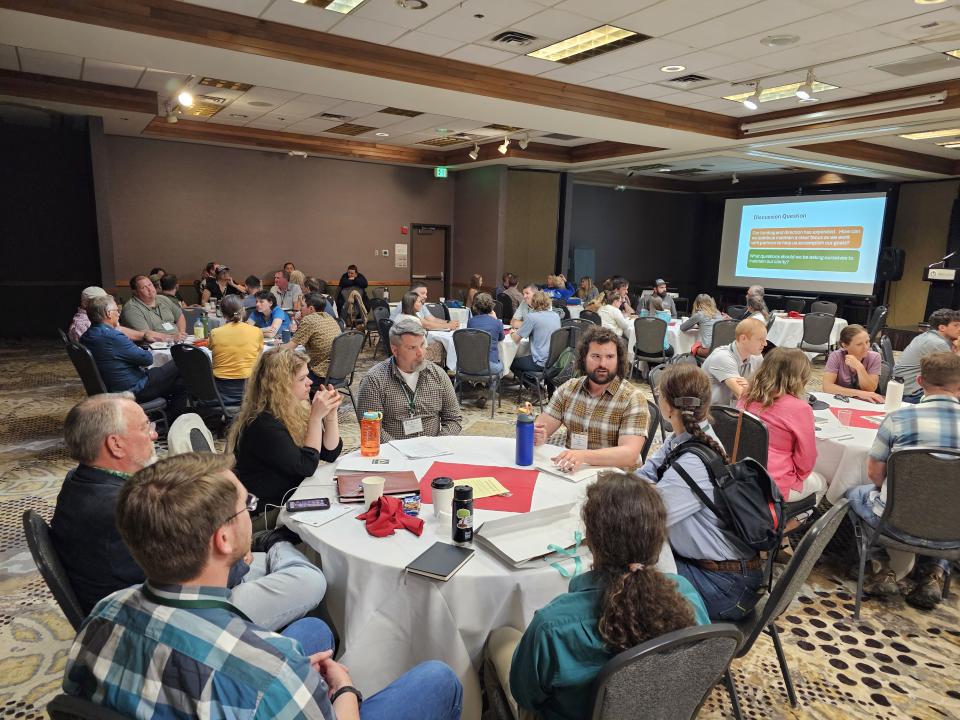
After lunch, participants engaged in small group discussions. Topics included administration of easements, partnering with land trusts, geospatial data, tribal engagement, projects supporting underserved communities, and mapmaking for proposals.
Attendees then heard from a panel of longstanding FLP partners Barry Dexter (Stimson Lumber Company), Dick Dolan (Trust for Public Land), and Ryan Lutey (Vital Ground Foundation). The panel discussed tactics and offered advice for consideration when working with partners. Themes discussed included establishing trust, the importance of good communication, active participation, genuine concern for issues, and finding common ground.
The Summit concluded with remarks from Steve Koehn (Forest Service) and Scott Stewart (Forest Service), reinforcing the importance of the Forest Legacy Program, emphasizing accountability, and highlighting the strength of collaboration and partnerships.
In reflection, the FLP Summit proved invaluable as new and experienced FLP coordinators reconnected as a community, shared institutional knowledge, and engaged in meaningful discussions about the latest program developments and emerging issues.
To learn more about the Forest Legacy Program, visit the USDA Forest Service Forest Legacy webpage or the WFLC Forest Legacy webpage.
